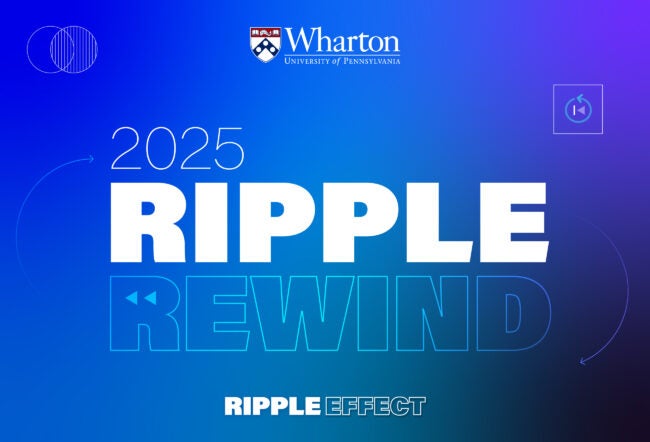As the federal government looks to phase out Fannie Mae and Freddie Mac, Denmark could provide a new model for home financing, argues Jack Guttentag, an emeritus professor of finance at Wharton who runs a website called The Mortgage Professor, in this op-ed.
On August 17, the U.S. Treasury and Federal Housing Finance Agency announced “further steps to expedite the wind down of Fannie Mae and Freddie Mac.” The steps, we are told, will “support the continued flow of mortgage credit during a responsible transition to a reformed housing finance market.”
Mostly, the new measures have to do with inconsequential bookkeeping involving the relationship between the agencies and the Treasury. The only thing worth noting about these bookkeeping changes is that they make 100% clear that the agencies are on the road to liquidation. But the planned liquidation process will do nothing to “support the continued flow of mortgage credit” — it can only dampen the flow.
Further, the liquidation process would be a responsible transition to a reformed housing market only if it was accompanied by a concrete plan to replace the dysfunctional, and now defunct, private secondary market with a robust one that works. No such plan has emerged. Fannie and Freddie are being phased out, but nothing is being phased in to take their place.
Implications of the Phase-out for the Current Market
The widespread impression that monetary easing has gone about as far as it can go to stimulate the housing market is based on prime mortgage interest rates, which have indeed plumbed new lows. However, the rate penalties for less-than-prime conventional loans (those not from the Federal Housing Administration or U.S. Department of Veterans Affairs), set by Fannie and Freddie, have increased sharply. Qualification requirements set by Fannie and Freddie have become extremely restrictive, and those set by many lenders selling loans to the agencies are even more so because of fears of having to buy them back.
Two strategically important groups have been particularly hard hit by excessive stringency. One is the self-employed — predominantly small business owners who are a major potential source of employment growth. The other is investors who buy homes to resell at a profit, and who are major purchasers of foreclosed homes sold by lenders. (For a more complete analysis, see Why Isn’t Housing Recovering?)
The wind-down process will not make this problem go away, but it can make it worse. To meet the targeted reduction in their portfolios, the agencies at some point may have to start selling assets from their portfolios or cut the volume of mortgages they purchase, either of which will hurt the market. These would come on top of measures not connected to the wind-down that are already in the works — to raise the guarantee fees paid by lenders, and to require lenders to share losses with the agencies. One would never guess that it is current government policy to encourage a recovery in the housing market.
Implications of the Phase-out for the Future Housing Finance System
Yet the more important issue is the shape of the housing finance system that will evolve as the agencies wind down. The underlying, if unstated, assumption seems to be that private sector lending would expand to fill the void left by the phase-out of Fannie/Freddie, but there is no strategy associated with the phase-out to bring that about. Three possible strategies are examined in this paper: expansion of portfolio lending, revival of the private secondary market that collapsed during the crisis and development of a different type of private secondary market.
Expanding Portfolio Lending
When the lender who originates a loan retains it instead of selling it, we call it portfolio lending. Before World War II, virtually all mortgage lending was portfolio lending, and in most other countries this remains the case. In the U.S. today, however, only about 5% of new loans are retained. The lenders are depository institutions including credit unions. The rest are securitized with guarantees of the federal government.
There is no prospect that existing depository institutions in the foreseeable future will be able to expand their portfolio lending to the degree needed to offset a phase-out of Fannie and Freddie. Most of the mortgages purchased by the agencies have fixed interest rates. Even if the industry of depositaries grew to twice its current size, it could not absorb these mortgages without exposing itself to the same kind of interest rate risk that devastated the savings and loan industry in the 1980s.
In addition, the recent financial crisis demonstrated that home mortgages carry substantially more default risk than previously thought. Portfolio lenders now realize that home prices can fall as well as rise, which reduces the value of the collateral securing home mortgages. They also realize that when home prices drop in a weak economy, default rates can balloon to double digits, and they will not have the staff to acquire and dispose of collateral quickly, which further reduces collateral values. Finally, lenders are now aware that when the system is stressed, government will blame lenders for the plight of borrowers, and will insert itself into the collection process in numerous ways that raise lender costs.
In short, reflecting both the direct impact of the financial crisis, and the punitive actions of government stimulated by the crisis, portfolio lending has become increasingly unattractive to depository institutions. The mortgages they want to hold today are primarily large ones made to existing customers.
Reviving the Private Secondary Market
Secondary mortgage markets allow investment in mortgages by firms without the capacity to originate them, and they allow firms to originate mortgages without having permanent funding sources. The private secondary market that developed in the U.S. was modeled on those developed by Fannie and Freddie, which included the fashioning of multiple securities, designed to meet the diverse needs of investors, from a single pool of mortgages.
However, the private mortgage securities differed from those of Fannie/Freddie in one critically important way. The Fannie/Freddie securities were liabilities of the issuers, whereas the private securities were not. Every individual mortgage security was a stand-alone entity secured by whatever reserves or insurance protections were embedded in that security. If these reserves turned out to be superfluous, as they always were before the crisis, they were paid out to investors who owned a residual claim to them. These were often the firms that had issued the security. While these firms had the right to remove unneeded reserves, they were under no obligation to provide additional reserves if this proved necessary.
Since the surpluses on one security were not available to meet deficiencies on others, and since no one was obliged to provide additional reserves if this became necessary, the entire market was a house of cards. When some securities did run into trouble and were downgraded by the credit rating agencies, fears about the status of others ran rampant and the entire house collapsed.
Investors in private mortgage securities suffered extremely heavy losses. Investors included many foreign firms, and also Fannie Mae and Freddie Mac, which had purchased substantial amounts of AAA-rated securities issued against subprime mortgages.
The prospects for a revival of this market are nil. There may be a few small securities issued against the highest-quality mortgages, but the volume needed to offset a phase-out of Fannie/Freddie will not happen. Nor should we want it to, because the stand-alone model is inherently weak. What is needed is a strategy for developing a more robust secondary market. The good news is that a tested model exists in Denmark. The challenge is in developing a political strategy to implement it in the U.S.
Implementing the Danish Model
In the Danish model, every mortgage security is a bond that is a liability of the firm issuing it. The Danish mortgage banks issue separate bonds for each type of mortgage, and if one of them experiences a high loss rate, all the resources of the bank are available to deal with it. There has never been a default on a Danish mortgage bond in over 200 years. During the very worst months of the financial crisis, it was business as usual in the Danish mortgage bond market. And more recently, during the worst months of the eurozone crisis, it has been business as usual in the Danish market.
The core of the Danish system is an institution called a “mortgage bank” which originates mortgage loans and simultaneously funds each one in the bond market. The mortgage banks also service the loans they make on behalf of the bondholders. We have no such firms. Our mortgage banks originate loans which they may or may not service, and sell them. When they did securitize loans before the crisis, it was on a block (rather than loan-to-loan) basis, and the security was a stand-alone for which the mortgage bank assumed no liability.
To convert some of our existing mortgage banks into Danish-style mortgage banks (henceforth DMBs) may require enabling legislation at the federal level, but that is the least of it. A DMB will require more capital than any existing mortgage bank has, and to generate the margins required to earn an adequate return on capital, the bonds it sells must be priced as very low-risk investments. To meet these requirements, DMBs will need a helping hand.
Fannie and Freddie should provide the needed assistance, but under the supervision of the Federal Housing Finance Agency, which will monitor the development of DMBs and the associated phase-out of Fannie/Freddie. To provide the additional capital required by newly chartered DMBs, the agencies could purchase non-interest-bearing capital notes from them, which must be paid off over a specified period. The capital note repayment period would be long enough for the DMB to generate the retained earnings needed to retire the notes.
The initial series of bonds issued by DMBs would carry Federal guarantees, but these bonds would be open-ended only for a specified period. Beyond the bond guarantee period, new mortgages would be funded by bonds that are guaranteed by the DMB but not the government. The bond guarantee period would be long enough for the DMB to demonstrate that its bonds were safe and sound investments without federal guaranty.
Existing mortgage banks are the most logical candidates to become DMBs, and the most logical constituency for moving the development through the political process. In our political system, nothing much gets done without a push by an entity with some political clout that has a strong interest in getting it done. Nonetheless, DMBs could also be formed de novo, or as affiliates of depositories or other types of financial firms.
The phase-out of Fannie/Freddie would be tied to the growth of DMB bonds without federal guarantees. As DMB lending increases, Fannie/Freddie lending can decrease.
This proposal is not a quick way to get rid of Fannie/Freddie, but there is no quick way that would not seriously disrupt the market. The alternative to a slow fix is no fix.
Implications for the Primary Market: Direct Linkage between the Primary and Secondary Markets
In the U.S. system, the primary market where loans are made to borrowers is separated by time and process from the secondary market where the loans are eventually funded permanently. For example, a loan closed by a small (“correspondent”) lender is sold to a larger wholesale lender that sells it to an investment bank, which places it in a new mortgage security. Months may pass between the date when the loan is closed and the date when the loan becomes collateral for a security.
In the Danish model, in contrast, there are no transfers of ownership, because each individual borrower is funded directly by the secondary market. The mortgage bank simply adds the mortgage to an open bond issue covering the same type of mortgage. If the new loan is a 5%, 30-year FRM, for example, it is added to the outstanding bond secured by 5%, 30-year FRMs.
Reflecting these differences in the relationship between primary and secondary markets, borrowers in the U.S. face far more challenges in shopping for mortgages than borrowers in Denmark. Borrowers in the U.S. don’t have access to secondary market prices, and if they did, it would do them no good because there would be no way to use it. They are on their own in dealing with loan originators, many of which use a variety of tricks of the trade to extract as much from them as possible.
In Denmark, borrowers can price their loan by accessing secondary market prices online. They enter the type of mortgage they want and the interest rate, and find the corresponding bond selling for the highest price. The prices of all Danish mortgage bonds are shown on the NASDAQ web site. (Alternatively, borrowers can go to a broker or loan officer who is paid by the lender selected, who has access to the same bond data with consumer-friendly add-ons.) The borrower pays the bond price plus a .5% rate add-on by the lending bank, plus some out-of-pocket fees that are set competitively.
Refinancing Options
When market interest rates drop, borrowers in both the U.S. and Denmark can refinance at par to lower their interest rate. When market interest rates rise, however, only borrowers in Denmark can refinance at the lower market price. Borrowers in the U.S. must pay off their old loan at par.
For example, borrower John Doe has a $200,000 balance on his 5% mortgage, and he expects to sell his house for $250,000 in a market in which home buyers pay 5%. But before he can sell, market rates jump from 5% to 7.5% and potential buyers can now only afford to pay $200,000, wiping out Doe’s home equity. However, because of the rate increase, the market price of Doe’s 5% mortgage has dropped from $200,000 to $170,000. If Doe is a Dane, before selling his home, he can refinance into a 7.5% loan by paying $170,000 to retire his old loan; by so-doing, he retains three-fifths of his equity. If Doe is from the U.S., his entire equity is wiped out.
Given the already substantial depletion of home equity in the U.S., the need to reduce the further losses that will occur when interest rates begin their inevitable ascent is compelling.
Note: The writer thanks Alan Boyce for helpful comments. Comments and questions can be left at http://www.mtgprofessor.com.



